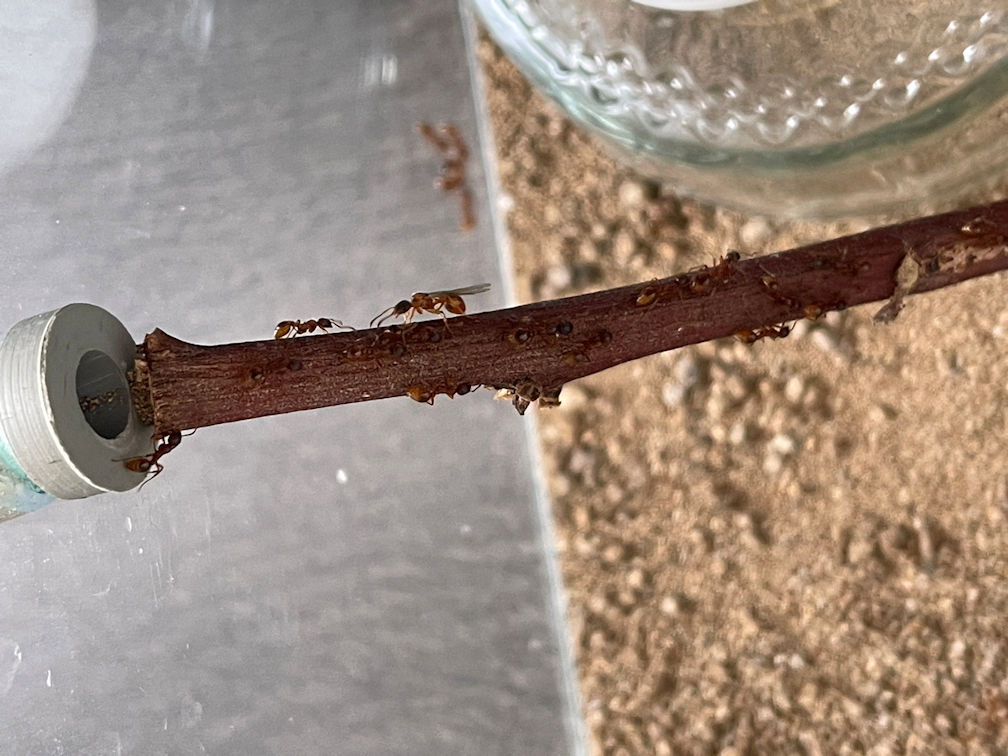Flying Ant Day is Here! Yes, it’s that time of year again when us ant enthusiasts get excited. Everybody else gets annoyed as flying ants in their thousands take to the air.
Of course, to call it Flying Ant “Day” is a bit of a misnomer. Flying ants do not just fly on one day each year.
When Do Flying Ants Fly?
Good question. The answer depends on which species of ant we are talking about. When most people talk about Flying Ant Day, they refer to the mass-synchronised mating flights of the common black garden ant, Lasius niger. These are the most abundant ants in the UK. However, it is worth mentioning that, taking Lasius niger as an example, there are generally more than one “Flying Ant Day”.
Yes, it does seem that there is a particular day when most Lasius niger ants fly, but there are a number of smaller flying ant days too. I generally notice two or three each year. There is the main one which appears to occur around the middle of July. These are followed by the smaller flights within a couple of weeks. Lasius niger mating flights have normally all taken place by mid-August.

Other Species “Flying Ant Days”
Of course, Lasius niger are not the only species of ant in the UK. Formica rufa, the red wood ant found in the pine forest of southern England, are some of the earliest flying ants seen in the year. They tend to fly in April/May. Many of the Myrmicinae species fly as late as October.
These ants often fly in secluded areas, such as forests. Some fly to particular locations away from inhabited places. Some fly early in the morning or very late during the day. Hence why their mating flights are not seen on the same scale as Lasius niger.
What are Flying Ants? Why do They Fly, and why in Large Numbers?
Briefly (more detailed information can be found on my How Does an Ant Colony Start? page), flying ants are the new queens and males who are often produced early each year by the egg-laying queen. In fact they are usually the first eggs the queen of an established colony will lay on emergence from the winter hibernation.
These winged virgin queens and winged males (the only time boy ants are produced) take to the air in order to mate and establish a new colony. The male ant dies very quickly after mating leaving the queen ant to start a new colony on her own. Sometimes newly-mated queens will come together to cooperate in starting a new colony, but often, species dependant, only one queen is tolerated once the new workers are born.
The reason they fly in such large numbers and at the same time is that the queens prefer to mate with males from other colonies, and therefore prevent “contamination”, as it were, of DNA. Only a tiny percentage of new queens go on to successfully raise a new colony. Most are killed by predators, such as birds or other ants.